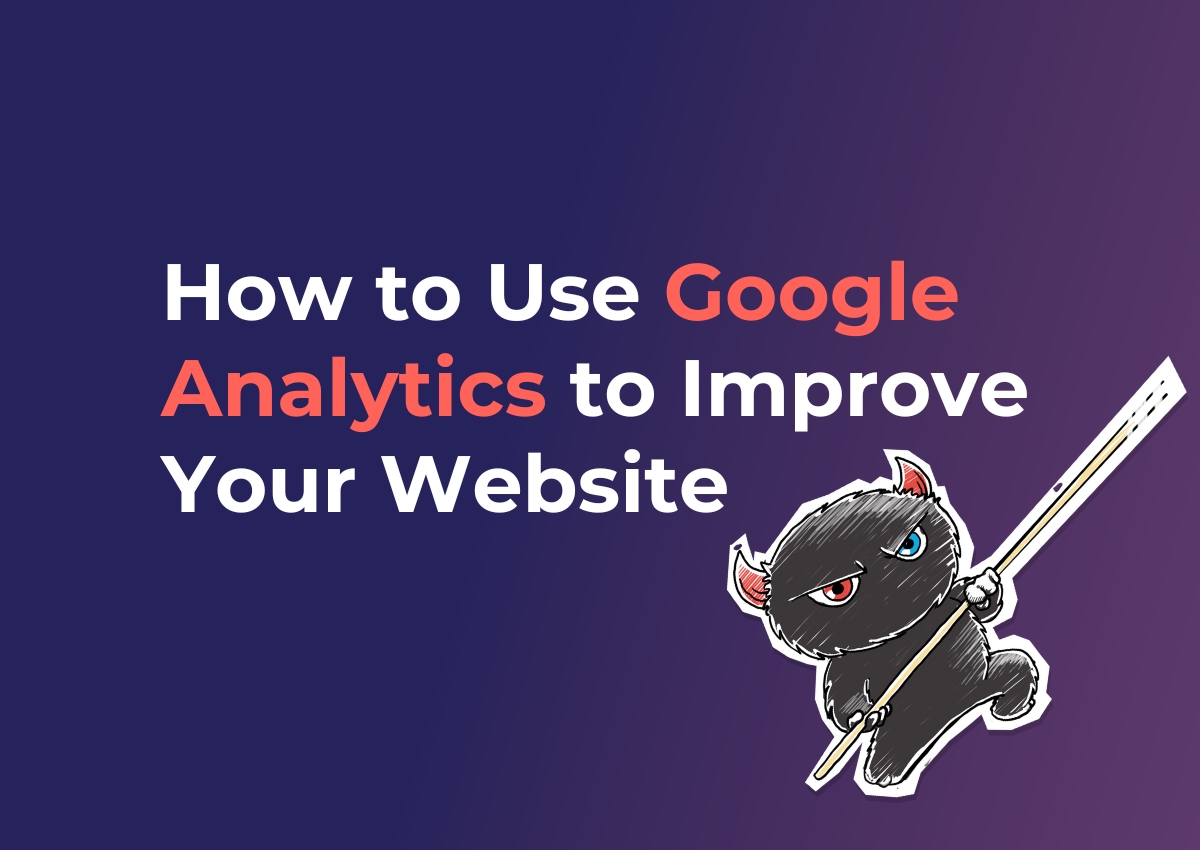 https://www.omahamediagroup.com/images/uploads/monster_gallery/Omaha-Media-Group-Black.jpg
nora
https://www.omahamediagroup.com/images/uploads/monster_gallery/Omaha-Media-Group-Black.jpg
nora
How to Use Google Analytics to Improve Your Website

Google Analytics is a powerful tool that helps us understand how our website is performing. It provides detailed insights into our site's traffic, user behavior, and overall effectiveness. By using Google Analytics, we can make informed decisions to improve our website and better serve our visitors.
Understanding our audience is the first step in creating a successful website. Google Analytics shows us who is visiting our site, where they are coming from, and what they are doing once they arrive. This information helps us tailor our content and marketing strategies to better meet the needs of our users.
Another important aspect of Google Analytics is its ability to track specific goals and conversions. Whether it’s a newsletter signup, a purchase, or a form submission, Google Analytics can measure these actions. Setting up goals allows us to focus on what matters most for our business and track our progress over time.
In this guide, we will explore how to use Google Analytics to improve our website’s performance. From understanding key metrics to setting up goals and analyzing user behavior, we will cover all the essential steps. Get ready to unlock the full potential of your website with Google Analytics.
Understanding Key Metrics in Google Analytics
Google Analytics provides several key metrics that help us understand our website’s performance. Here are some essential metrics to focus on:
- Sessions and Users: Sessions represent the number of visits to our site, while users are the unique visitors. Monitoring these metrics helps us see overall traffic trends and assess our site’s reach.
- Bounce Rate: The bounce rate indicates the percentage of visitors who leave our site after viewing just one page. A high bounce rate may suggest that our content isn't engaging, or the user didn’t find what they were looking for.
- Pages Per Session: This metric shows the average number of pages viewed during a session. It helps us gauge user engagement and interest in our content.
- Average Session Duration: The average session duration tells us how long visitors stay on our site. A longer duration typically means that users find our content valuable.
- Traffic Sources: Understanding where our traffic comes from—such as search engines, social media, or referral sites—allows us to optimize our marketing efforts and invest in channels that drive the most visitors.
By keeping track of these key metrics, we gain a comprehensive view of our website’s performance. This enables us to make data-driven decisions to improve our site and better meet our audience’s needs.
Setting Up Goals and Conversions
Goals and conversions in Google Analytics help us track specific actions that are important to our business. Here’s how to set them up:
- Identify Your Goals: Determine what actions you want to track. This could be newsletter signups, product purchases, form submissions, or any other valuable activity on your site.
- Use Google Analytics Admin Panel: Go to the Admin panel in Google Analytics. Under the ‘View’ column, click on ‘Goals’ and then ‘New Goal.’
- Choose a Goal Type: Select the type of goal you want to set up. Common types include Destination (when users reach a specific page), Duration (how long users stay on your site), and Event (specific actions like button clicks).
- Set Goal Details: Provide the necessary details for your chosen goal type. For example, if you select a Destination goal, enter the URL of the thank-you page users see after completing the action.
- Verify and Save: Once you’ve set up the goal, verify that it’s working correctly and save it. Google Analytics will start tracking this goal and provide data on conversions.
Tracking goals and conversions helps us measure the effectiveness of our website and marketing efforts. It allows us to see which strategies are driving valuable actions and where we can make improvements. By setting up and monitoring goals, we can focus on what truly matters for our business success.
Analyzing User Behavior to Identify Improvement Areas
Google Analytics provides insights into user behavior that can help us pinpoint areas for improvement on our website. Here are some key tools and metrics to focus on:
- Behavior Flow: This visual representation shows the path users take through our site. It helps us understand where users start, which pages they visit next, and where they drop off. By analyzing these paths, we can identify pages that may need optimization to keep users engaged.
- Site Content Reports: These reports show which pages are the most visited and how users interact with them. By examining metrics like page views, average time on page, and exit rates, we can see which content is performing well and which may need improvement.
- User Demographics and Interests: Knowing the demographics and interests of our audience can help us tailor our content to better meet their needs. Google Analytics provides insights into the age, gender, and interests of our visitors, allowing us to create content that resonates with them.
- Search Queries: Understanding what users are searching for on our site can uncover content gaps. The Site Search report shows the terms users enter in our site's search bar, helping us identify what additional information or products they are looking for.
By analyzing these aspects of user behavior, we can make informed decisions to enhance user experience, increase engagement, and improve overall site performance.
Utilizing Reports to Drive Actionable Insights
Google Analytics offers various reports that provide valuable insights for making data-driven decisions. Here are some key reports to utilize:
- Audience Reports: These reports give us a detailed view of our visitors, including demographics, interests, and geographic locations. Understanding our audience helps us create content and marketing strategies that appeal to them.
- Acquisition Reports: These reports show how visitors find our site, whether it’s through search engines, social media, direct visits, or referrals. By analyzing this data, we can see which channels are driving the most traffic and focus our marketing efforts accordingly.
- Behavior Reports: These reports provide insights into how visitors interact with our site. We can see which pages are the most popular, how users navigate through the site, and where they drop off. This information helps us improve site structure and content.
- Conversion Reports: These reports track the performance of our goals and conversions. We can see the paths users take to complete conversions, which sources drive the most conversions, and how effective our sales funnels are.
To make the most of these reports, regularly review them and look for trends and patterns. Use the data to make strategic decisions that drive improvements. For example, if acquisition reports show that social media is a major traffic source, invest more in social media marketing. If behavior reports indicate high drop-off rates on certain pages, optimize those pages to retain users.
Conclusion
Google Analytics is an essential tool for improving our website’s performance. By understanding key metrics, setting up goals, analyzing user behavior, and utilizing reports, we can make data-driven decisions that enhance user experience and drive better results.
Regularly reviewing and acting on the insights provided by Google Analytics helps us stay ahead of the competition and ensure that our website meets the needs of our audience. As we continue to optimize and refine our strategies, we’ll see increased engagement, improved user satisfaction, and greater success for our business.
If you’re ready to take your website to the next level, let Monstrous Media Group LLC help. Our team of experts specializes in digital marketing strategies and web design services that leverage tools like Google Analytics to deliver outstanding results. Contact us today to get started on maximizing your website’s potential!
Hire the team to help you with your website, app, or other marketing needs.
We have a team of digital marketers who can help plan and bring to life all your digital marketing strategies. They can help with social media marketing, email marketing, and digital advertising!
CONTACT US

Comments